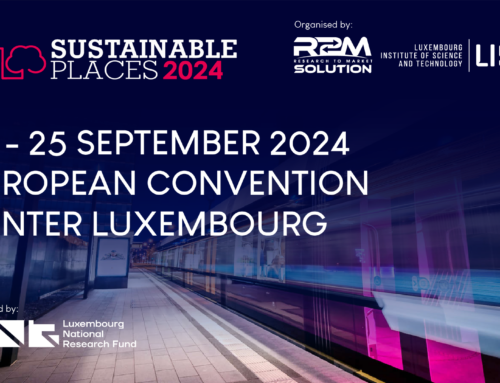The use of digital technologies enables energy communities (ECs) to participate in peer-to-x markets, including peer-to-grid markets that connect smaller players as well as ECs with the larger players (TSOs and DSOs) to trade flexibilities between them, for example. In these markets, providers can configure flexibility services on a platform either individually or bundled, and local DSOs can procure ancillary services to resolve local grid bottlenecks and other problems such as voltage fluctuations. New flexibility market models in the form of market or aggregator platforms have been developed and tested in various European countries as part of pilot projects in recent years. ECs can be formed locally or virtually with a group of members who share the same purpose. The ERA-Networking group has categorised ECs into ten classes, which are listed below in Figure 1 [1].
Figure 1. Ten classes of ECs [1]
The two main models for ECs are (i) where members pay contributions to an entity, or (ii) where shareholders own and control an entity. Either way, the entity invests in some type of RE source (RES). Individual European households have joined ECs, for example in the form of co-ops [2]. In 2021 Germany and Denmark led Europe with 1750 and 700 ECs respectively. Pioneering EC examples in the UK are: Baywind Energy Cooperative, Eigg Electric, Edinburgh Community Solar Cooperative, Community Energy Scotland, Leominster Community Solar, and Bath & West Community Energy [3].
ECs can be structured into seven types: energy co-ops, limited partnerships, community trusts and foundations, housing associations, non-profit customer-owned enterprises, public-private partnerships, and public utility companies. Energy co-ops benefit members and are popular in countries with advanced renewables and community energy. Limited partnerships allow individuals to distribute responsibilities and generate profits through community energy. Community trusts and foundations aim to generate social value and local development, even when citizens lack the means to invest in projects. Housing associations offer benefits to tenants in social housing and address energy poverty. Non-profit customer-owned enterprises manage independent grid networks, while public-private partnerships involve local authorities partnering with citizen groups and businesses. Public utility companies are less common but suitable for rural or isolated areas [4].
Energy co-ops are most effective when guaranteed feed-in tariffs (FiTs) exist [4] [5]. They are usually based on a voluntary commitment from citizens and therefore need low-bureaucracy access to participation. Especially in countries and regions where co-ops are still in their infancy, there is also a need for low-risk access to capital. EU is trying to support the need for co-ops to have easy access to the energy market and capital security with a split definition of ECs (of which co-ops are a variety). There is the definition of Citizen Energy Communities (CECs) as defined in Directive (EU) 2019/944 (recast Electricity Directive). These ECs are to be supported through a good access to financial instruments and information. There is also the definition of RECs, which is contained in Directive (EU) 2018/2001. RECs shall be supported through access to financial instruments and information, customised support schemes, removal of unjustified barriers, and support in capacity-building to public authorities. There are several differences between CECs and RECs. In a CEC, non-regional companies can invest in the EC. CECs are limited to the electricity sector, while RECs can cover any energy sector and are limited to the production, consumption, and sale of RE [6].
RECs, CSC, and CECs are measures enabling the participation of residential users. CECs and RECs both have legal definitions based on directives in the CEP. The following definitions are broad and must be transposed into national law by individual MSs [7].
Author: Zia Lennard, R2M France
References:
[1] ‘dena_ANALYSIS_Energy_communities_Accelerators_of_the_decentralised_energy_transition.pdf’ https://www.dena.de/fileadmin/dena/Publikationen/PDFs/2022/dena_ANALYSIS_Energy_communities_Accelerators_of_the_decentralised_energy_transition.pdf
[2] ‘Energy prosumers in Europe – Publications Office of the EU’
https://op.europa.eu/en/publication-detail/-/publication/496ccfd9-3d4c-11ed-9c68-01aa75ed71a1
[3] H. Palomo, ‘Energy Communities: Energy Saving through Local Production and Consumption’, Spacewell Energy (Dexma)
https://www.dexma.com/blog-en/energy-communities-energy-saving-through-local-production-and-consumption/
[4] E. Caramizaru and A. Uihlein, ‘Energy communities: an overview of energy and social innovation’, JRC Publications Repository
https://publications.jrc.ec.europa.eu/repository/handle/JRC119433
[5] ‘Sustainability | Statistical Evidence on the Role of Energy Cooperatives for the Energy Transition in European Countries’
https://www.mdpi.com/2071-1050/10/9/3339
[6] ‘Energy cooperatives: Local community solutions as an answer to global energy crises: FES Just Climate’
https://justclimate.fes.de/e/energy-cooperatives-local-community-solutions-as-an-answer-to-global-energy-crises
[7] ‘Murley et al. – 2021 – Delta-EE Flexibility Research Service.pdf’
https://smarten.eu/wp-content/uploads/2022/02/EU_Market_Monitor_2021_PUBLIC_ONLINE.pdf







